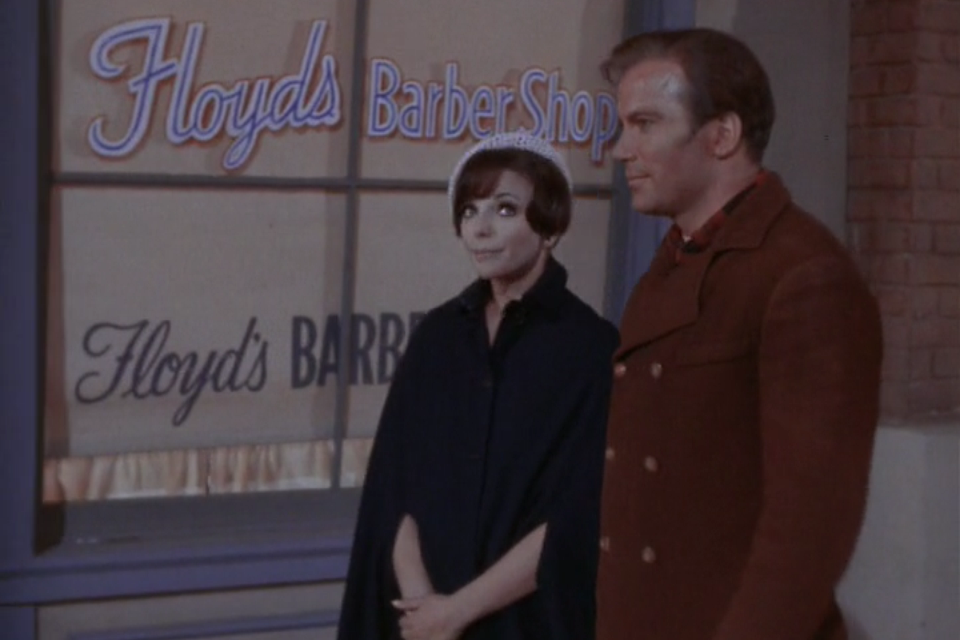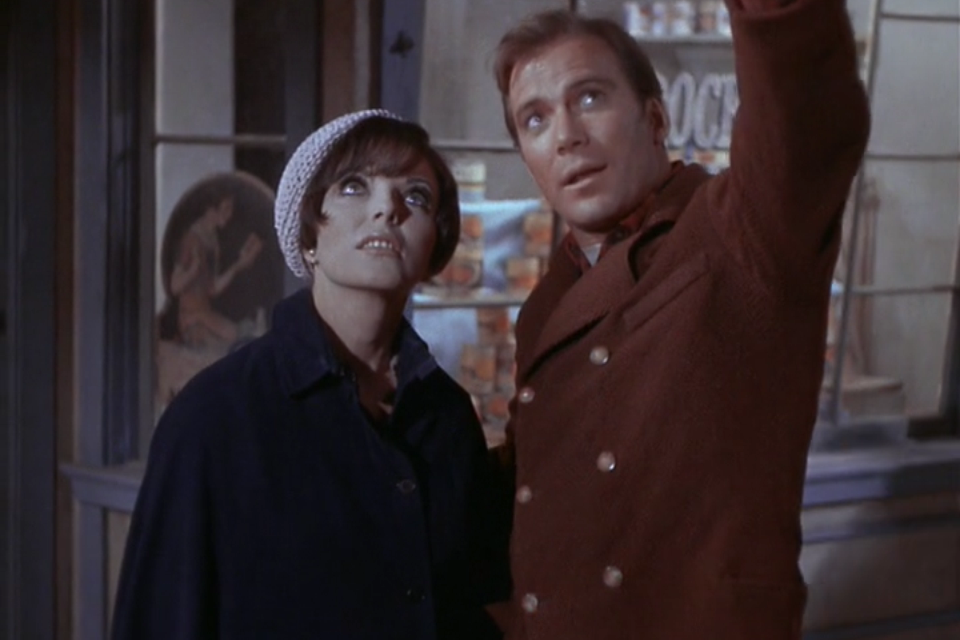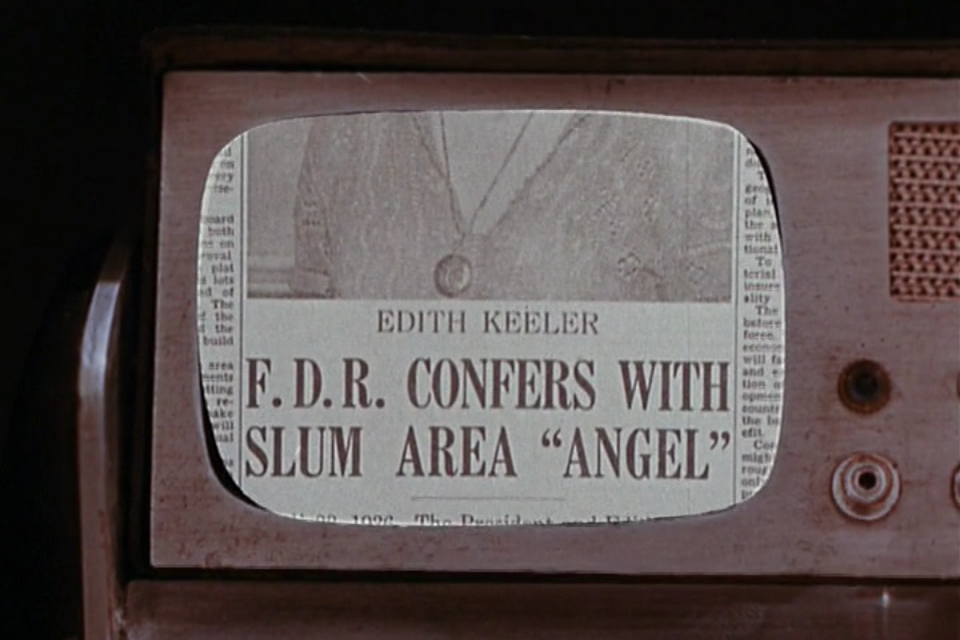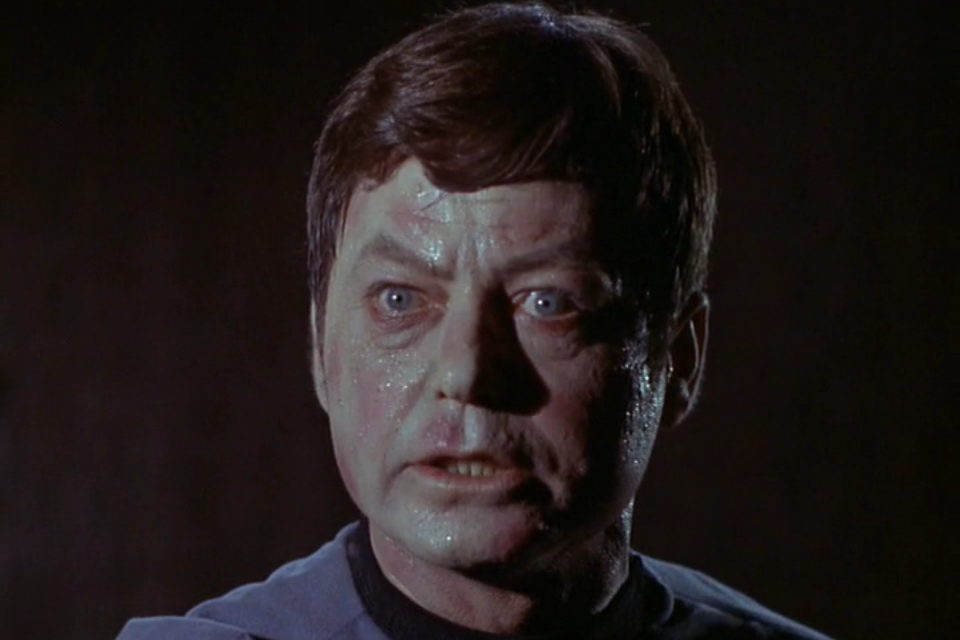The City on the Edge of Forever makes nearly everybody's top 10 list and for most it is at or near the # 1 spot. It begins as the Enterprise is rocked passing through ripples in time. Sulu is hurt and then treated by McCoy.
As another disturbance shakes the ship McCoy is accidentally injected with cordrazine, which makes him paranoid and delusional. He flees the bridge and beams down to the center of the time distortions on the planet below.
The unnamed planet is one example of how the production team pulled out all the stops in making this episode. Given the show's limited budget and the great difficulty in creating optical effects they tended to recycle their effects, including the shots of the "different" planets visited by the Enterprise. Have a look:
Row 1: Delta Vega, Rigel XII, Alpha 117, M-113, Psi 2000, Exo III.
Row 2: Tantulus V, the other Earth from Miri, Planet Q, Taurus II, Starbase 11, Omicron Delta
Row 3: Gothos, Cestus III, planet from Alternative Factor, Earth without clouds, Earth with clouds, Beta III
Row 4: Eminiar Vii, Omicron Ceti III, Janus VI, Organia, planet from City on the Edge of Forever
If you take a look you'll notice that the reddish Delta Vega version of a planet appears 9 times and that the blue Rigel XII version shows up 5 times. Further, the blue variant is exactly the same as the reddish one! They just changed the color pallet. There's even a green version of the same planet which was used in This Side of Paradise. Earth shows up as the planet in Miri as "Earth's twin" and of course on Tomorrow is Yesterday as Earth itself. They used the version of Earth with clouds but changed the color pallet and flipped the image to make the continents less recognizable for Omicron Delta (green) and Cestus III (orange). There are two planets that only show up on the view screen without the Enterprise in orbit - Gothos and Taurus II. Each of these appears to be a unique, matte painting, not a rotating globe and was used only the one time in the first season.
Given the large amount of recycling of planets it really was a big deal that a new one was created for the episode.
Another sign that the producers wanted something special here was in the music. After the last dozen episodes used music that had been tracked from earlier episodes the producers finally commissioned new music for this one. The City on the Edge of Forever got a partial new score by Fred Steiner. It's only about 10 minutes of new music, but it gives the episode some continuity as there are themes that tie it all together. Some of what was written and recorded was not used for the episode though. All of it, including the song Goodnight Sweetheart, is available on the impressive box set of music from the original Star Trek series available from La-La Land Records.
Back to the episode. Kirk, Spock, Uhrua, Scotty & two Red Shirts beam down to the planet to find McCoy when they encounter the Guardian of Forever, a machine/being/time portal that created the time distortions that led them to this world.
As the Guardian shows them Earth's history McCoy passes through the portal and somehow changes the course of time. As the Guardian says, "Your vessel, your beginning, all that you knew is gone." Bummer.
Kirk and Spock enter the portal in an attempt to right the wrong committed by McCoy and soon encounter Edith Keeler (played by Joan Collins), an amazing social worker with a strong and optimistic vision of the future. Her message is one of hope for the future, the kind of thing that abounds in Star Trek. Here she is speaking to the crowd that is getting a free meal in her soup kitchen:
Kirk and Spock enter the portal in an attempt to right the wrong committed by McCoy and soon encounter Edith Keeler (played by Joan Collins), an amazing social worker with a strong and optimistic vision of the future. Her message is one of hope for the future, the kind of thing that abounds in Star Trek. Here she is speaking to the crowd that is getting a free meal in her soup kitchen:
I don't pretend to tell you how to find happiness and love when every day is just a struggle to survive, but I do insist that you do survive because the days and the years ahead are worth living for. One day soon man is going to be able to harness incredible energies, maybe even the atom. Energies that could ultimately hurl us to other worlds in some sort of spaceship. And the men that reach out into space will be able to find ways to feed the hungry millions of the world and to cure their diseases. They will be able to find a way to give each man hope and a common future, and those are the days worth living for. Our deserts will bloom.
In a way Edith Keeler embodies everything that is Star Trek. Her vision of the future is certainly part of what draws Kirk to fall in love with her.
Not knowing when or where McCoy will appear, Spock tries building a device to interface with his tricorder. As he explains to Edith Keeler, "I am endeavoring, ma'am, to construct a mnemonic memory circuit using stone knives and bearskins."
Spock soon learns that Keeler is the focal point in time that they have been looking for. She has two possible futures and the fate of the world hangs in the balance. In one future she is killed in a traffic accident. In the other she eventually meets with President Roosevelt with a message of peace that delays the U.S. involvement in World War II. As a result, Nazi Germany conquers the world.
Spock concludes that to restore the timeline Edith Keeler must die.
Looking like death warmed over, McCoy finally makes an appearance and meets Edith Keeler. She nurses him back to health and later explains that her young man (Kirk) is take her to a Clarke Gable movie. Nobody did their research here, as Gable was still a Hollywood nobody in 1930.
When the pivotal moment comes McCoy tries to save Edith and Kirk is forced to restrain him from doing so. She dies and the timeline is restored. It is a dramatic moment that clearly pulls at Kirk.
When they return the Guardian of Forever offers, "Many such journeys are possible. Let me be your gateway." Kirk wants no part of it. They beam up and the show's over. I would hope that his log entry recommended to Starfleet that they drop a few hundred photon torpedoes on the site.
It's an all-around top notch episode with a great story, effects, music, acting and production values. If you haven't seen it in a while, watch it here from Star Trek.com.
I also really like this song about the episode by the band Five Year Mission. Check it out below:
Next up is the last episode of Season One, the much less awesome Operation: Annihilate!
Not knowing when or where McCoy will appear, Spock tries building a device to interface with his tricorder. As he explains to Edith Keeler, "I am endeavoring, ma'am, to construct a mnemonic memory circuit using stone knives and bearskins."
 |
| Yes, that is Floyd's Barbershop from Mayberry as seen in The Andy Griffith Show. |
 |
| Edith Keeler & James Kirk look at that "far left star in Orion's belt" back in 1930 when stars could still be seen from NYC. |
Spock concludes that to restore the timeline Edith Keeler must die.
Looking like death warmed over, McCoy finally makes an appearance and meets Edith Keeler. She nurses him back to health and later explains that her young man (Kirk) is take her to a Clarke Gable movie. Nobody did their research here, as Gable was still a Hollywood nobody in 1930.
When the pivotal moment comes McCoy tries to save Edith and Kirk is forced to restrain him from doing so. She dies and the timeline is restored. It is a dramatic moment that clearly pulls at Kirk.
When they return the Guardian of Forever offers, "Many such journeys are possible. Let me be your gateway." Kirk wants no part of it. They beam up and the show's over. I would hope that his log entry recommended to Starfleet that they drop a few hundred photon torpedoes on the site.
It's an all-around top notch episode with a great story, effects, music, acting and production values. If you haven't seen it in a while, watch it here from Star Trek.com.
I also really like this song about the episode by the band Five Year Mission. Check it out below:
Next up is the last episode of Season One, the much less awesome Operation: Annihilate!















No comments:
Post a Comment